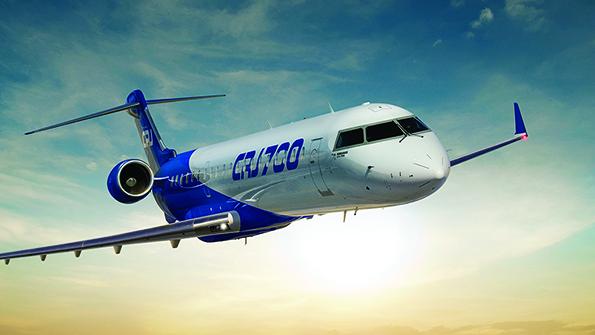How Will Regional Jet Market Be Affected By COVID-19 Crisis?

Ask the Editors: The Aviation Week Network invites our readers to submit questions to our editors and analysts. We’ll answer them, and if we can’t we’ll reach out to our wide network of experts for advice.
What are your thoughts about the COVID crisis impact on the regional jet market?
Senior Business Editor Michael Bruno and Air Transport and Safety Editor Sean Broderick respond:
Regional jets just might be a dark horse in the post-COVID-19 landscape. RJs could see an uptick in interest as commercial passengers bypass larger hubs for health or convenience reasons in favor of more point-to-point travel. Other scenarios include leisure travelers deciding to ditch their overseas ambitions and stay closer to home for vacation. And business travelers may take trips with shorter radii as supply chains and commerce become more regionalized, versus the just-in-time, across-the-world regime preceding the novel coronavirus outbreak.
But a breakthrough in the U.S., the largest RJ market, likely would require a renegotiation of scope clauses, the contracts with pilot unions that limit airlines from shifting operations to larger RJs. Pilots are likely to have diminished leverage with airlines in the post-pandemic environment—at least for a while. That could lead to a new dynamic between pilots and management teams that favor larger fleets of small narrowbodies/larger regional jets to help build up networks that may look a lot different (think of David Neeleman’s Breeze Airways, which plans to use aircraft with fewer than 150 seats in a point-to-point network).
Pilot contracts at all three U.S. major airlines that use RJs are up for renegotiation in the next two years. If the marketplace changes enough, perhaps pilot unions and airlines could agree on new scope clauses. Or, as Delta Airlines has done with its 109-seat Airbus A220s, the two sides could find ways to work some newer-generation, high-efficiency smaller airplanes into mainline operations.
Finally, with Boeing backing away from taking an 80% stake in Embraer’s commercial unit, perhaps an enterprising acquirer or investor will eye the latter’s RJ and business unit for opportunity, especially as some see business jets benefitting in the long run also. The early post-pandemic recovery’s outlook could help shift and shape this key issue.






